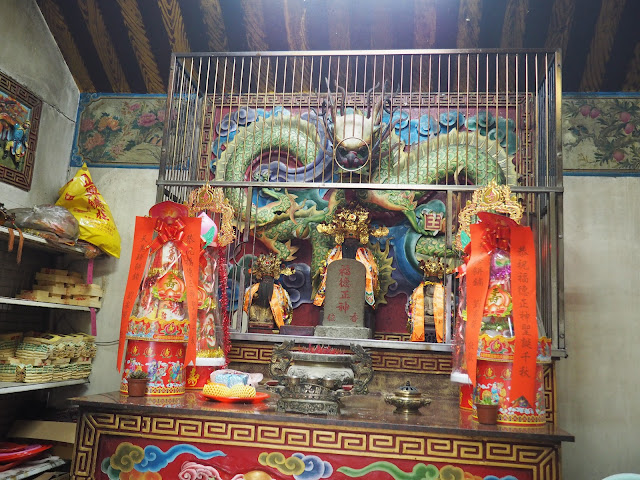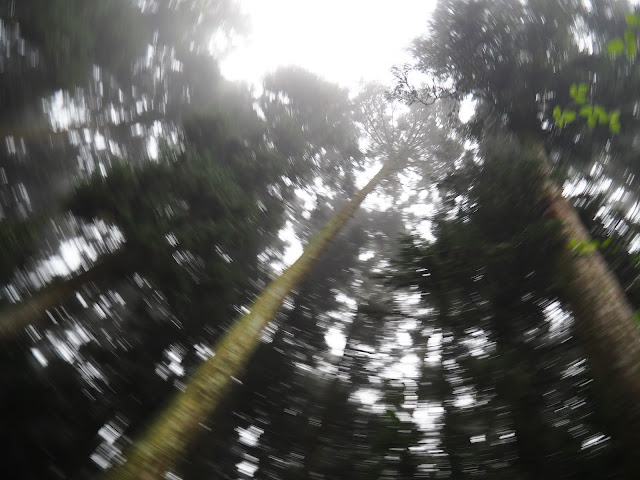By 6.30am of Day Five of our holidays in Taiwan, we had already woken up and out of the door of the Yeashow Villa in Fenqihu where we were holed up for the night. The reason for our early rising escapes me; perhaps it wasn't to catch a sunrise, at least not yet. That experience would be reserved for Alishan, our next destination.
At 6:30 am, the Fenqihu Old Street still slumbered. Shops were yet to open. So, what was our plan? Naturally, we decided to ascend the stone steps to the rail station! The platform greeted us devoid of people. For quite some time, we were the sole souls present. The mist rolled in, cloaking the platform and casting an ethereal ambiance over the entire station. Along the way, we encountered sizable spider webs adorning the fences and shrubs.
Shortly thereafter, we decided to venture beyond the confines of the rail station. Crossing the tracks, we passed by a small shrine which, according to an information signboard, was dedicated to the local Earth God (土地公). However, a stone inscription within the shrine, positioned in front of the deity's image, clearly read Hock Teik Cheng Sin (福德正神).
Now, I do know that in Penang, the Hock Teik Cheng Sin is a common name for temples dedicated to Tua Pek Kong (大伯公), the Deity of Prosperity. For instance, the Hock Teik Cheng Sin in Armenian Street, George Town, established around 1850, is also known as Poh Hock Seah (寶福社). Similarly, in Bukit Mertajam's old town centre, the recently restored 134-year-old Tua Pek Kong temple is referred to as Hock Teik Cheng Sin. Since our return from the holiday, I've been curious whether the people in Fenqihu also worship their version of the Tua Pek Kong deity.
Moving beyond the shrine, we reached the starting points of the Fenrui Historic Trail (奮瑞古道) and Fenqi Trail (奮起步道). We ventured further but reluctantly gave up after a short distance into one of the trails due to the looming gloom. The weather had taken a turn, threatening rain. Hastening our descent through a grove of square bamboo, named for the shape of its stalk, we found ourselves back at the rail station. By this time, the station had opened, and tourists had arrived. The platform and tracks were now bustling with more people.
Opting to return to the Old Street for breakfast, we later headed back to begin packing but not before exploring the area behind the hotel. The bus scheduled to take us to Alishan was set for around 11:10 am, affording us enough time for one last visit to the station to await the arrival of the first train from Chiayi.























No comments:
Post a Comment